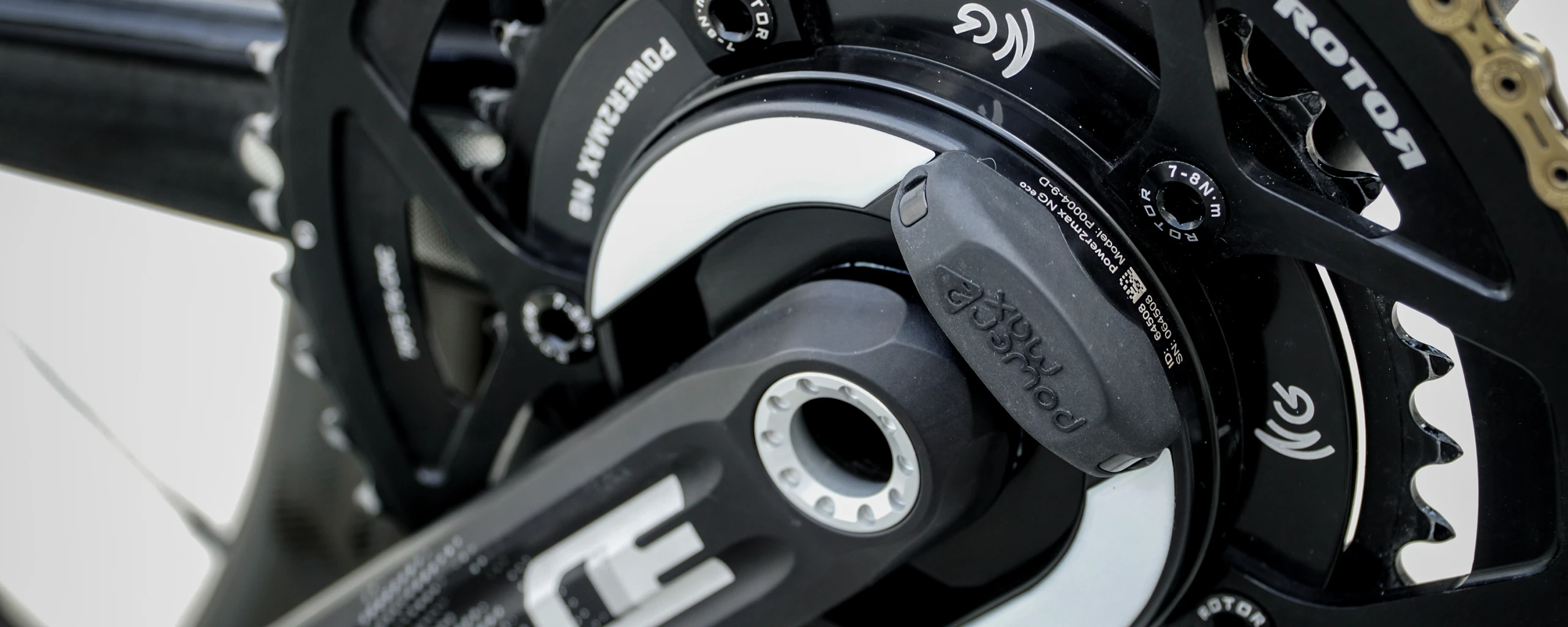Enhancing Aerobic Capacity
Aerobic capacity, or VO2 max is one of the most important determinants of endurance performance for cycling. Power meter workouts allow a cyclist to effectively focus on increasing it. One goal-oriented workout that has been shown to be effective for increasing a rider’s aerobic capacity is interval training. For example, 4x8min at 90-95% of the FTP followed by 10min easy.
The workout is supported by research indicating that high-intensity repeated intervals are more effective for increasing VO2 max compared to steady efforts. A rider may measure improvements by performing the same test every 6 weeks. A 20-minutes-all-out test, and then comparing the average power output over time.
Recovery makes a significant contribution to the increases in fitness obtained from training, as does proper nutrition. Cyclists may experience significant benefits by consuming a combination of carbohydrates and protein after workouts in terms of recovery and preparation for future workouts. Some important suggestions include waiting to eat until 2-3 hours after the session and consuming carbohydrates and protein in a 3:1 or 4:1 proportion.
The use of power data for periodization should also be considered. Periodization is a common practice among advanced cyclists involving the division of a season into separate periods, during each of which cyclists focus on a particular aspect of fitness. They may be mesocycles, such as endurance, intensity, or taper, or microcycles. The use of precise power meter data may be incredibly helpful for periodization planning; they can help a cyclist maintain the correct levels of fatigue and not overtrain, as well as peak at a specific moment during the year when key races usually take place.
Improve Anaerobic Threshold
The anaerobic threshold or lactate threshold is defined as the point of intensity at which lactate start to accumulate in the blood. It is a key determinant of fitness and is underlined in sports such as cycling as it can dictate the intensity a rider can sustain over an hour.

Threshold Training Sessions
Cyclists can perform a training session on a bike to stress their anaerobic system by performing an effort just below their threshold, just above it, or at their threshold. A typical session may include 2x20min at 100-105% of FTP, divided by 5-minute recovery intervals. The power output at the threshold can be closely monitored during the training session to ensure that the intensity of the effort is high enough to develop improvements.
Physical Testing
Cyclists must complete a physical test on a bike after every 4-6 weeks to determine any improvements in their threshold. The test is typically off 20-60 minutes and the power results of the test are forms the basis of a new and improved workout intensity. This information is generally used in the formulation of a training plan and the determination of an individual’s anaerobic threshold.
Implementation
The workout sessions should be performed a minimum of two times a week to achieve improvements. Surges of such high intensity, however, must by regulated to minimize the chances of experiencing the negative repercussions of overtraining. In a competitive racing scenario, cyclists can employ their power meters to stay close to their anaerobic threshold without experiencing the effects of going over too early.
Maximize Energy Efficiency
Energy efficiency in cycling optimization means that the lowest amount of energy is used to maximize output. It is the basis of cycling comfort and success, but it can be very affected by power meter data. The use of power-related information allows cyclists to adjust their effort in a precise way during both training and competitions.
Power-to-Weight Ratio
These factors are based on power data. One way to improve a rider’s power-to- weight ration is by increasing the power output, which can be achieved through targeted performance training. Another important factor is weight: it must be managed, but it is important to avoid losing muscle mass. Durin a training session, the cyclist may perform multiple hill repeats by completing 3×10 minutes efforts with maximal intensity, trying to keep a very similar wattage for all repeats, approximately 275 watts for an average cyclist. The third period is chosen not to make the rider collapse but to create a good condition for improving the first two.
Aerodynamic Positioning
Another method to reduce energy wasting is to adjust bike fit parameters. There are usually methods to trial them during training and use power meters to measure the gain. It is possible to use a flat course to test the difference in at least two riding positions while trying to keep the same speed. The average power output will be different for poor positioning, which would require more power to keep the same speed. Another method is to measure the power used be cycling with a disc wheel or under-dressed versus training wheels.
Gear Identification
Cyclists should also use power meters to isolate the most effective choice of gear for a certain course type. The training sessions should very coordinated, and if the choice is between several types of gear, a rider must pay attention to one that will not let him use too much power to keep maximal speed. Smoother riding and shifting techniques are also important.
Precision Of Interval Training
Interval training is a fundamental aspect of cycling performance enhancement, where high-intensity efforts are alternated with periods of rest. The precision of the intervals can be reliably ensured by the use of a power meter on a cyclist’s bike, allowing for instant and quantified feedback on their output. Structured workouts are the main way in which training is implemented.
Structured Workouts. An example of a structured precision interval session may be 6×5 minutes at 120% FTP, with 5 minutes of recovery . Using a power meter allows the given 5-minute effort to be performed at the exact correct intensity, removing the prevalent problem of starting too hard and fading in subsequent intervals.
Adjustment in Real Time. Because the cyclist has live power data, they can adjust their effort instantly. If a rider should be aiming to achieve 300 watts in an interval and they notice that they are consistently targeting 320 watts, they may make a conscious effort to ease up and return to the desired power number for the rest of the set. This is invaluable for the precise execution of the specified workout.
Post-Training Analysis. Analysis of the data can reveal patterns in the cyclist’s behavior in particular types of intervals. It could be observed that the power tended to drop with every subsequent interval, meaning there was an issue of endurance. The analyzed power data may inform training specifics such as more interval work or work on dropping power spikes.缇he power targets of the intervals should also change dynamically with the given training stimulus. This will allow the training session to capitalize on the effort put into it to the maximum possible extent. A power meter allows monitoring in real time and post-training analysis for peak precision in interval work.
Monitor Recovery Rate
One of the critical factors in cycling training is monitoring recovery rate. It is vital to know whether an athlete is not overtraining and has enough recovery to absorb the benefits of hard workouts. Power meters can be useful in this aspect as they allow to see how a rider’s power and heart rate vary and how these metrics adapt to standardized efforts over time.

Heart Rate Recovery
A simple way to monitor this process is by measuring the decay of heart rate after a standard effort. An athlete can perform a 5-minute all-out interval repeated at a fixed intensity. If the time taken by a rider’s heart rate to return to the baseline after such efforts is longer than expected based on the previous experience, recovery may be incomplete.
Power Stability in Endurance Rides
Another indicator that a body is not recovering as fast as before from previous efforts may be the stability of power output during long, steady rides. If a rider’s power output is wavier than it typically is over 3-hour endurance rides or the power drops by 10-20 watts for the same perceived effort, it may suggest that the body is not yet recovering from the previous exertions as it used to.
Trend Analysis
Besides looking at specific rides, it is important to track some data over weeks or even months. If a rider’s power output at a fixed heart rate increases gradually over several weeks, it could suggest that the individual is becoming fitter and his or her recovery rate is improving. Based on these metrics, a training plan can be adjusted. If recovery indicators are not good enough, a planned high-intensity session can be replaced with a low-intensity ride.
Balance Training And Rest
In cycling, an optimal balance between training and resting is critical both for the sake of training and performance and long-term improvement. With power meters, it has become possible to balance the efforts with a rider’s actual performance and personalized data, making training both more effective and less likely to cause harm or overuse indicators. It allows for both tailoring training to be effective and safe and for ensuring appropriate timing and planning to recover properly.
Measuring Training Load
The use of power meters as precise and touchless measuring tools enables athletes to ensure that the training load is minimized, as well as minimized. Keeping an eye on the Training Stress Score will allow one to reject long-term overreaching entirely. The athlete can check if the following week’s TSS is within expected limits, such as 300-500 for some athletes or twice that for others to ensure they remain on track.
Recovery Monitoring with Power Metrics
If the power blows up or the heart rate spikes on greatly differing efforts, the athlete may consider playing it safe. Comparing something of the same efforts might also help. In shorter power efforts, longer ones should be compared rather than weekly duration workouts In such a case, the athlete might consider either taking the day off or reducing the training intensity to PSU or DESC. The athlete can ensure they properly rest over time after a block of high-intensity training. After three days of high-intensity training, taking a day off would ensure the maintenance of muscle capacity and performance at the currently achieved level or decrease.





